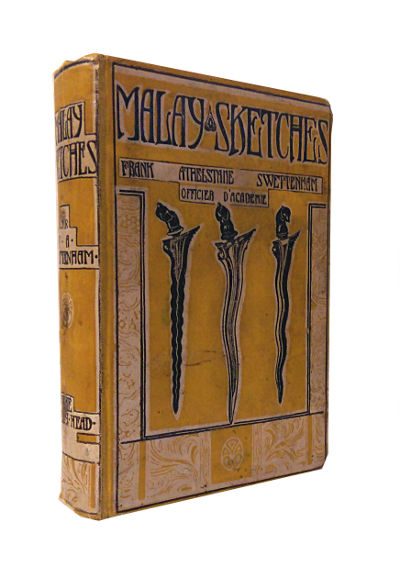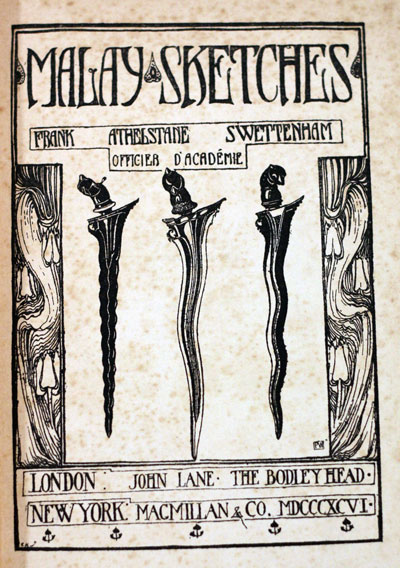About Frank Swettenham (from Wikipedia):
Sir Frank Athelstane Swettenham GCMG CH (28 March 1850 – 11 June 1946) was the first Resident General of the Federated Malay States (part of the then Royal Colonies, now independent Malaysia) which was formed by combining a number of sultanates. He served from 1 July 1896 to 1901. He was also an amateur photographer. He was born in Belper, Derbyshire,Britain.
He was one of close to forty former British empire officials to actually oppose the Malayan Union.
He created a dictionary “Vocabulary of the English and Malay languages”. He also published two books “Malay Sketches” and “Unaddressed Letters”.
Swettenham was a British colonial official in British Malaya, who was famous as highly influential in shaping British policy and the structure of British administration in the Malay Peninsula.
In 1871 Swettenham was first sent to Singapore as a cadet in the civil service of the Straits Settlements (Singapore, Malacca, and Penang Island). He learned the Malay language and played a major role as British-Malay intermediary in the events surrounding British intervention in the peninsular Malay states in the 1870s.
He was a member of the Commission for the Pacification of Larut set up following the signing of the Pangkor Treaty of 1874 and he served alongside John Frederick Adolphus McNair, and Chinese Kapitan Chung Keng Quee and Chin Seng Yam. The Commission was successful in freeing many women taken as captives during the Larut Wars (1862–73), getting stockades dismantled and getting the tin mining business going again.
More than a decade later, in 1882, he was appointed as resident (adviser) to the Malay state of Selangor. In Selangor office, the development of coffee and tobacco estates had successfully promoted by him, while in the meantime, helped boost tin earnings by constructing a railway from Kuala Lumpur (it was capital of Selangor at that time), to the port of Klang, which was later named Port Swettenham in his honour.
He attended the federation, along with the title of resident-general after he secured an agreement of federation from the states of Perak, Selangor, Negri Sembilan, and Pahang in 1895, when he was a resident of Perak state. In 1897 he was knighted by Queen Victoria, and in October 1901, three years before his retirement, he was appointed Governor and Commader-in-Chief of the Straits Settlements.
Through Swettenham’s huge efforts to convince that the British Foreign Office reversed its policy of accepting Siamese control of the northern tier of Malay states. His portrayal of their maladministration under native rulers and his warnings of possible intervention by rival European powers led to British penetration of those states in the early 1900s.
About Malay Sketches:
In 22 Chapters, Frank Swettenham gives us a vivid account of Malay life in the late 19th century. Mostly accounts of his residency in Perak, it reads more like a travel journal than an official, scientific or anthropological account, although it cannot be considered a travel journal. As Frank Swettenham himself states in his preface:
“This is not a book of travels, nor is it, in even the smallest sense, the record of a traveller’s experiences in a foreign land. It is a series of sketches of Malay scenery and Malay character drawn by one who has spent the best part of his life in the scenes and amongst the people described.
…The traveller will come in time, and he will publish his experiences of Malaya and the Malays; but while he may look upon the country with a higher appreciation and paint its features with a more artistic touch, he will see few of those characteristics of the people, none of that inner life which, I make bold to say, is here faithfully portrayed.”



